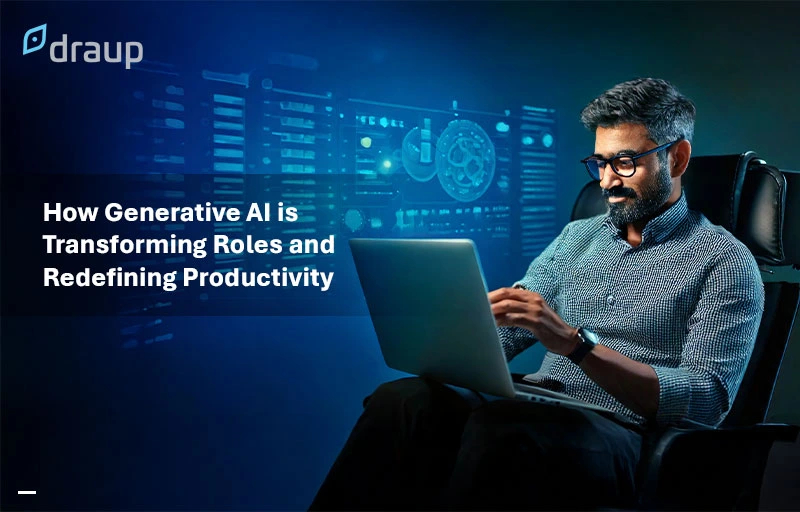Gone are the days when the media & entertainment (M&E) was just restricted to one corner of the house and for a particular time slot. With the advent of VOD, OTT, & mobile channels, the M&E industry finds itself in the middle of a fast-evolving technology battle.
To gain the upper hand, M&E players are turning to new-age tech like AI & Advanced Analytics.
Netflix combines ML, Collaborative Filtering & NLP to deliver scarily accurate recommendations based on user interest. Another OTT giant, Hulu, has tied up with IBM Watson Advertising to target users with an AI-powered ad experience.
Such innovative digital solutions, while requiring significant upfront investments, turn out to be cheaper in the long run. This “long–run” is now becoming shorter thanks to the blinding pace of technology advancement.
We take a look at some digital solutions that are poised to change the face of M&E for the better for all parties.
It’s Getting More Personal
Sure, with amazing content, you can keep your consumers’ attention on the screen. But what happens when an ad rolls in? Researchers have noted that the dissonance caused by advertisements often leads to consumers abandoning the session itself.
The solution?
Personalized advertising powered by Big Data Analytics, a la Hulu. Personalized advertising algorithms are capable of cross-channel tracking of both new and old users. With the vast amounts of consumer data at its disposal, Amazon is leading the pack when it comes to behavioral targeting, predictive modelling, and personalization. This ‘personalization’ trend is one of the hallmarks of the AI age.
Contextual, dynamically-inserted, data-powered messaging in real-time delivers astounding ROI. Amazon reports that 44% of customers buy from such product recommendations.
Content creation & curation strategies by ML algorithms are being deployed to help design trailers and provide subscribers with personalized content recommendations. These recommendation engines are built by collecting data on hundreds of attributes and is helping OTT players finetune the viewer’s homepage content.
A good example of this is Microsoft Azure Video Indexer and its audience insights function. This feature captures user data about interactions on online media and builds holistic user profiles to feed into their powerful recommendation engines.
Virtual Is As Good As Real
The recently concluded MTV VMA awards have shown that you can conduct virtual events with all the glitz and glamour of live events. Participants watched the show from the comfort of their homes while multiple performances were live-streamed to their device of choice.
Hosting and streaming virtual events is a very logistics-heavy exercise. The hardware difficulties aside, this requires the use of high-end digital video encoders available on-site, uninterrupted data availability and minimal-latency cloud services to become a success.
In light of COVID-19, event organizers are increasingly exploring virtual alternatives. Service provides with digital solutions applicable to this niche are looking at long-term gains since it looks like the trend of the virtual events will continue well after the pandemic.
Customer Sentiment Analysis
Customer sentiment analysis algorithms are being deployed at scale across platforms to gauge the success of content. This data is crucial for studios to decide which future projects to bankroll.
Google’s Cloud AutoML helps experienced ML engineers build and train custom ML models for specific business needs in the M&E industry. Fox Sports was able to train ML models to predict the fall of wickets in an Australian cricket match. The result was never-before-seen levels of audience engagement.
Digital Solutions for Content Production
Production studios are also increasingly leveraging next-gen technologies into their logistics and supply-chain processes. Film shootings across multiple locations simultaneously are now easier than before, thanks to cloud-based proprietary solutions. However, these solutions are often expensive for small-time players.
IT major Infosys implemented an automated metadata supply chain delivery platform to enhance quality while accelerating time-to-market for a North American studio. They implemented cloud-based automated workflows to extract data from legacy systems of the existing software solution and integrate it with a streamlined process.
Accessible Content for Everyone
Perhaps the greatest consumer-facing benefit of M&E digital transformation has been in making the content accessible to people with physical limitations.
Image recognition algorithms provide contextual information for visually impaired viewers. AI applications that provide real-time language translations and captioning for hard of hearing people are still in the experimental phases.
Websites, notorious for their lack of accessibility, are using AI tools like accessiBe to make their websites more accessible. The tool scans and analyzes the website and, within 48 hours, applies the necessary modifications so that the site transmits compliant and accessible content to the end–users.
Seizing Opportunities in M&E
In addition to new-age technology opportunities, studios are also looking to overhaul their traditional IT infrastructure.
Technology service providers (TSPs) can have partnership opportunities for sales enablement by offering a wide range of innovative capabilities in:
- Cloud migration
- AI/ML Solution implementation
- Predictive modelling
- Video analytics
- Media upstream & content processing
- Customer Premises Equipment(STBs, etc.) engineering
- Intelligent video delivery
- Data warehousing and more.
With M&E experiencing record users during COVID-19, they are looking for unparalleled hi-tech solutions that can upgrade the viewer’s user experience while still delivering high ROI for their stakeholders.
Draup for Sales curates actionable, intelligent insights about a company based on its current digital products/services and requirements. These strategic signals can assist service providers in developing customized niche sales engagement proposals that will accurately meet their prospective clients’ digital intentions.







